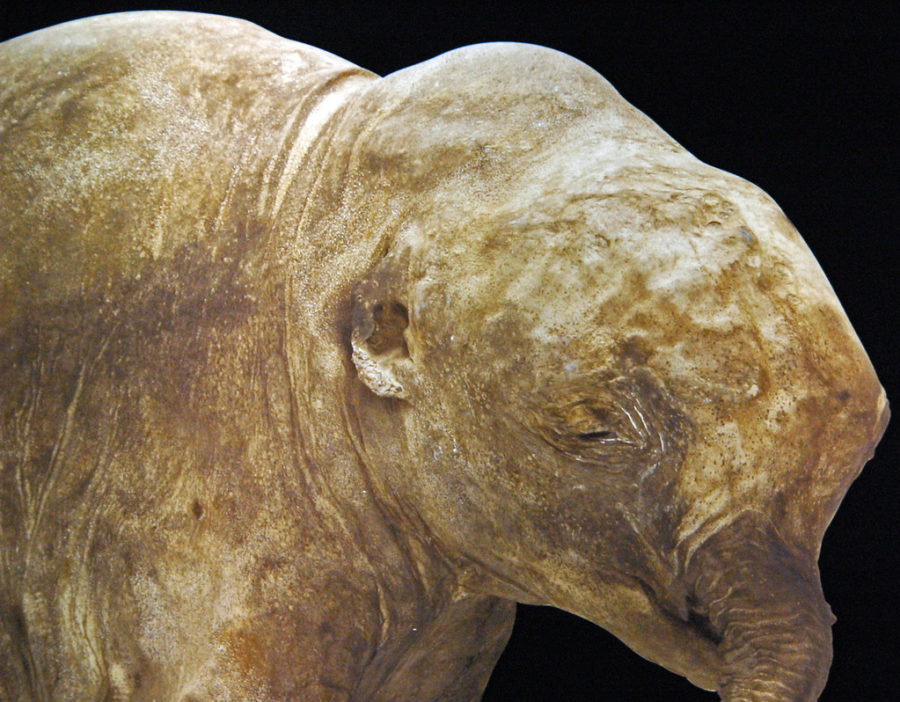Genetics company to revive the woolly mammoth by 2027
A preserved baby Woolly Mammoth, an ancient remain from a time period of ice estimated 40,000 years ago.
Harvard Biologist George Church has $15 million, a genetics team, and a colossal dream: to revive the woolly mammoth before 2027. Church’s company, Colossal, has set out to practice de-extinction with the hopes of giving this species another chance to walk the Earth. However, the morality and possibility behind the project is up for debate.
Church and his company plan to use modified Asian Elephant embryos to mimic woolly mammoth DNA with the CRISPR device; a technology used to modify genomes. It won’t be exact, but these new creatures will embody and act like the woolly mammoth did 10,000 years ago while having signature mammoth features such as their bulky body, long tusks, and brown woolly fur.
“In the minds of many, this creature is gone forever,” Company Colossal explained. “But not in the minds of our scientists, nor the labs of our company. We’re already in the process of the de-extinction of the woolly mammoth.”

This isn’t the first time a creature has been brought back to life. A company similar to Colossal, Revive & Restore, used the remains of a black-footed ferret named Willa who died in the 1980s to clone and rebirth her. The end result showed a ferret exactly like Willa, Elizabeth Ann, except living as a newborn in 2020; 30 years after her death.
“This means that her clone Elizabeth Ann is now the most genetically valuable black-footed ferret alive,” Revive & Restore said. “This birth is the result of a long-standing genetic rescue effort for the black-footed ferret species, the goal of which is to increase the genetic diversity and fitness of one of America’s most endangered species to help ensure its full recovery in the wild.”
It sounds like an idea straight out of “Jurassic Park”, and if that movie has taught the world anything it’s that just because we can, doesn’t mean that we should.

“Personally I think the science behind it is very interesting and while others may think it is scary- I do not think it is ‘immoral’,” Biology teacher Daniel Charneske said. “There are concerns about the safety and rights of the animal, but I do not think there is a moral issue with bringing an extinct creature back to life.”
Whether or not the woolly mammoth revival will be successful or not still remains to be seen. George Church estimates the first mammoths will be back on Earth in just a couple of years. If all goes to plan, the woolly mammoth family will return to their Arctic and Siberian kingdoms once again and create the thunder they did thousands of years ago.
Your donation will support the student journalists of Wiregrass Ranch High School. Your contribution will allow us to purchase equipment and cover our annual website hosting costs.

Jack is a freshmen at Wiregrass Ranch and this is his first year writing for The Stampede. Jack has a few hobbies including cooking, golf, chess, and gaming....










